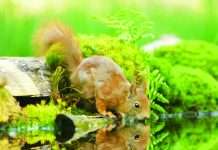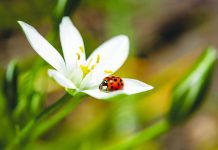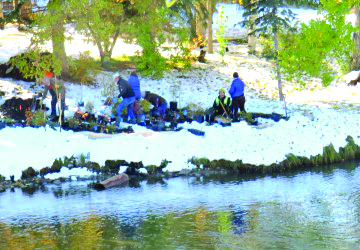
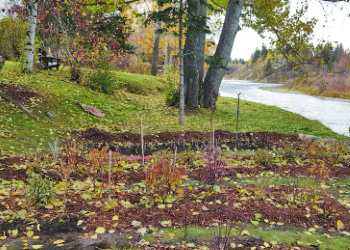
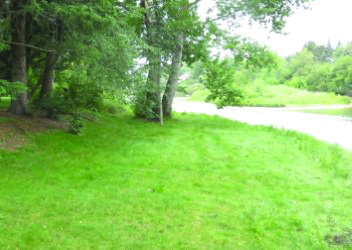
On October 6, Calgary River Valleys staff, Leaf Ninjas, and volunteers including MLA Greg Clark, got dirty to help keep the Elbow River clean and healthy.
It was planting day for their pilot Riverbank Makeover on the Elbow River. Calgary’s record-breaking snowfall earlier in the week covered the planting bed sites with two feet of snow but also provided a beautiful setting for the finished result.
Calgary River Valleys (CRV) is an independent, not-for-profit organization led by volunteers dedicated to building a strong and effective voice for river valley protection and water quality in Calgary. They work to provide informed input to the planning process regarding managing water and wetlands and conduct an annual Brown Trout egg bed (Redd) count on the Elbow River. This was their first foray into restoring riverbank health.
This year CRV received funding from the City of Calgary to help complete a model project so Calgarians can better understand the role and function of riverbanks, and how to take actions to restore them to a more natural state. Riverbank (riparian) restoration improves and maintains the health of river-adjacent areas as well as the quality and quantity of water flowing through Calgary’s rivers and creeks.
Through this project, CRV learned that Calgary homeowners who live next to the river are not only aware of the problems facing river and riparian health and are learning more about what sorts of actions they can take to protect the river and their own property from flood damage. The project now is focused on how to spread the word to more Calgarians.
Key to this effort is the underlying goal of raising our collective understanding of the City’s riparian resources and improving decisions, both private and public, that impact the health of our wetlands, creek and rivers. If you are interested in taking CRV’s short survey about riverbank (riparian) health, please visit: www.surveymonkey.com/r/HW6PJKZ
Riverbanks are a special zone. This is land where the vegetation and soils are strongly influenced by water. As a result, different types of plants can grow in the riparian zone as compared to the surrounding lands or uplands.
The model riverbank site was selected for conformation to specifications required by the City of Calgary, and because the homeowner agreed to three years of monitoring by CRV.
The volunteer group planted a variety of native plants—including shrubs like willows, gooseberries, roses, and dogwood. Native plants, rather than Kentucky Blue Grass monoculture, help encourage birds, beasts and pollinators. In fact, these native plants will encourage more wildlife to visit this yard. The gardeners planted in “guilds” or bunches to ensure safe passage of wildlife.
Willows, in particular, will also reduce water energy, and help protect the riverbank downstream. Their deep and highly meshed roots will hold the riverbank in place during high water events.
Other plants included smaller riparian native perennials chosen for varied bloom periods over the seasons; like Blue Flag Iris, Yellow Avens and Purple-Stemmed Aster to ensure the beauty of the riverbank over Calgary’s growing season.
A silt sock protected the bank’s edge and ensured none of the dirt or other materials would enter the waterway while the plants are establishing.
In spite of the snow, the day’s work was a great success. So much so, CRV would like to continue to do more restorations. They are seeking funding for more projects within Calgary. If you are interested in finding out more, and supporting them, please visit calgaryrivervalleys.org, or drop a line to [email protected].



